How to make Chocolate Mousse with Kirsten Tibballs | Chocolate Book
Video by Kirsten Tibballs
For more information and access to over 400 step-by-step recipes and tutorials you: www.savourschool.com.au/online-class-subscription/
There’s many different ways in how you can create a Mousse; there are fruit mousses, there’s chocolate, there are mousses with meringue, with custard, with looks of cream, gelatin, chocolate setting it - so there are lots of different applications.
I'm going to show you an easy mousse to create and how to get the best results while maintaining the most air when you’re mixing it. To start with, I’m going to place some 35% fat cream into the saucepan, I'm going to put in some vanilla bean so just cutting the vanilla bean in half.
Taking out all those beautiful seeds, you can freeze the vanilla bean to give it a much longer shelf life and when you buying it make sure, it's nice and pliable when you know you get a really good quality bean.
You can keep the skins - I always put them in the oven at home when I turn the oven off and it gives the house and beautiful aroma but once they’re all dry, I put them in the food processor to grind them to powder and then you can use that instead of the inside of the bean when you’ve run out.
I’m going to turn that on a low heat and while that’s boiling, I’m going to combine some sugar – some castor sugar – and some egg yolks.
When you put these two ingredients together make sure you mix them thoroughly, if you put them on top of each other without mixing what happens is a sugar will burn the yolks and you'll end up with some orange lumps throughout the mixture, which is what we don't want.
So just mix that, you don't need to aerate it at all, if it gets caught up and you whisk just open your whisk up to pop it out. Now that that’s boiling, we’re going to pour it in and just give that a whisk.
You’d never put the egg mixture into the cream because it’ll cook the eggs and will end up like scrambled eggs so this is called an Anglaise which is a really nice light custard that we’re creating and it's a great base for a mousse whether it's a chocolate mousse or a fruit-based mousse.
Just add the remainder of that cream in. Whisking it in, we're going to scrape that back into the saucepan. Now on really low heat, we’re going to heat this up to 80 degrees Celsius.
If you got a really strong stove or you’re working with gas or you’re not sure, I would recommend that you are actually put this custard mixture into a bowl, on top of a simmering saucepan rather than putting it on direct heat then you have a lot more control and it won’t go so quickly.
What I have here is some milk chocolate and a sift; as soon as this is ready I'm going to strain it to stop the cooking process over the milk chocolate and then whisk it together.
You can use a thermometer to determine if you've reached 80 degrees Celsius, you can also test it with the wooden spoon by dipping the wooden spoon in and wiping your finger across. If it runs over that line, it means that the mixture is not cooked enough if it holds the line it means you’ve reached80 degrees Celsius.
Stir it constantly while you’re heating it and ensure that it’s on really low heat. Now that's ready, we’re going to strain it immediately to stop the cooking process and we strain it to eliminate any of the cooked egg so it doesn’t go through to the chocolate.
We’re going to whisk the chocolate and the anglaise together until all the chocolate is melted. This mixture doesn't have any gelatin in it to set the mousse so it's kind of soft mousse if you want it to hold up outside or on display, it's usually best to add a small amount of gelatin and you would add that in just after you’ve strained the anglaise to the mixtures to ensure that it melts.
So we’ve got a beautiful, glossy finish and a base for our mousse. The next stage to aerate and lighten the mixture is to fold through some semi-whipped cream. When we fold through semi-whipped cream, we must ensure that this mixture is not too hot otherwise, we melt the butter in the cream and we lose all the air we incorporate.
So we looking at this to be between 30 and 34 degrees Celsius, approximately so it shouldn't feel really hard when we actually touch the ball. We have that cream here because these are two very different consistencies we can't just mix them altogether completely.
I'm going to add a little bit of cream into the chocolate mixture before adding the remainder. So we’re going to fold it through to ensure we maintain as much air as possible so just a small amount of cream to start.
Now that we’ve got that mixed in, it's important not to overwork or over mix the mousse because the cream can separate the butter and water and we’ll go very granular so we going to add the remainder now.
So this is just the semi-whipped cream so it’s got some beautiful air incorporated and some shape but it still actually collapses so just folding that through. And there we have our finished prepared mousse.
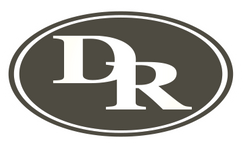
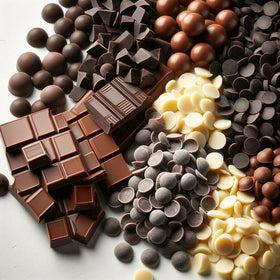
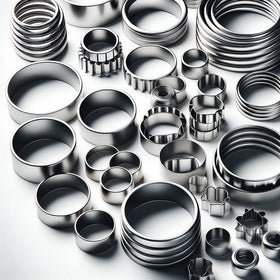
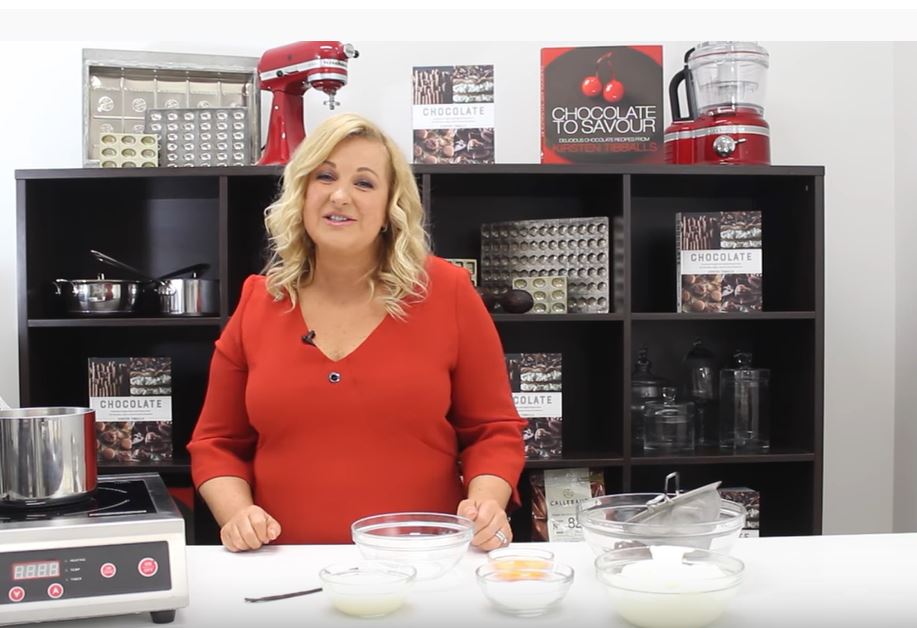
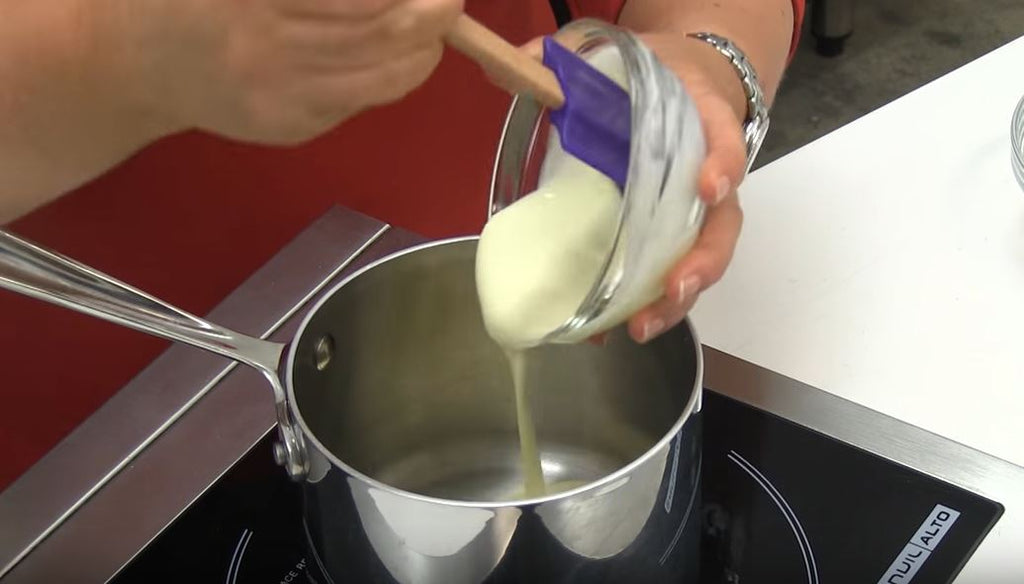
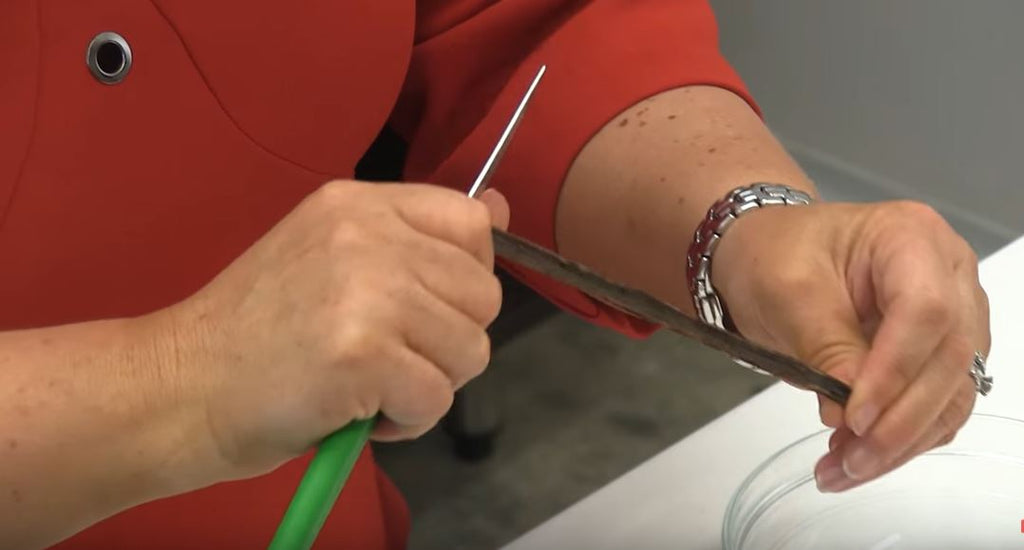
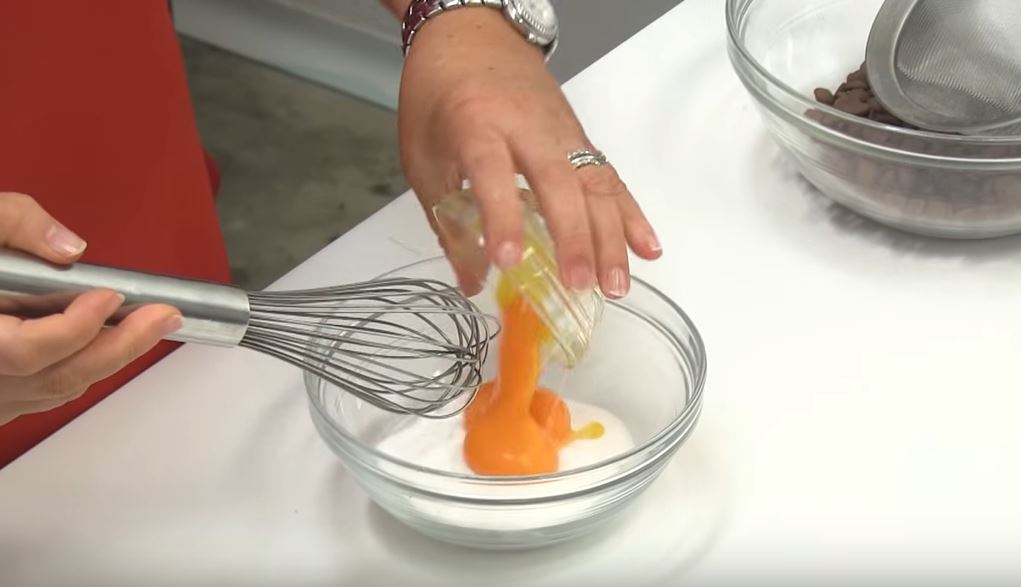
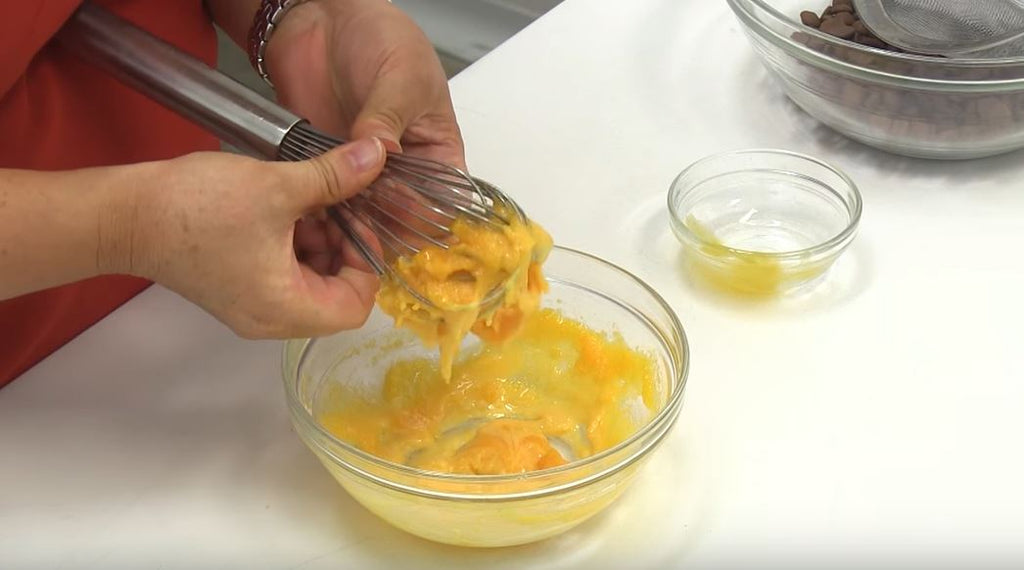
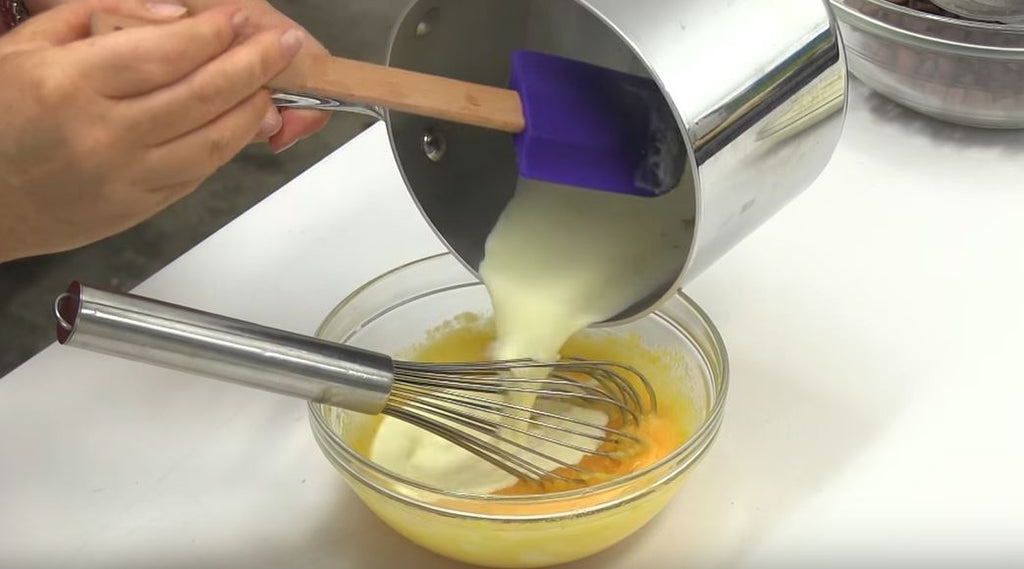

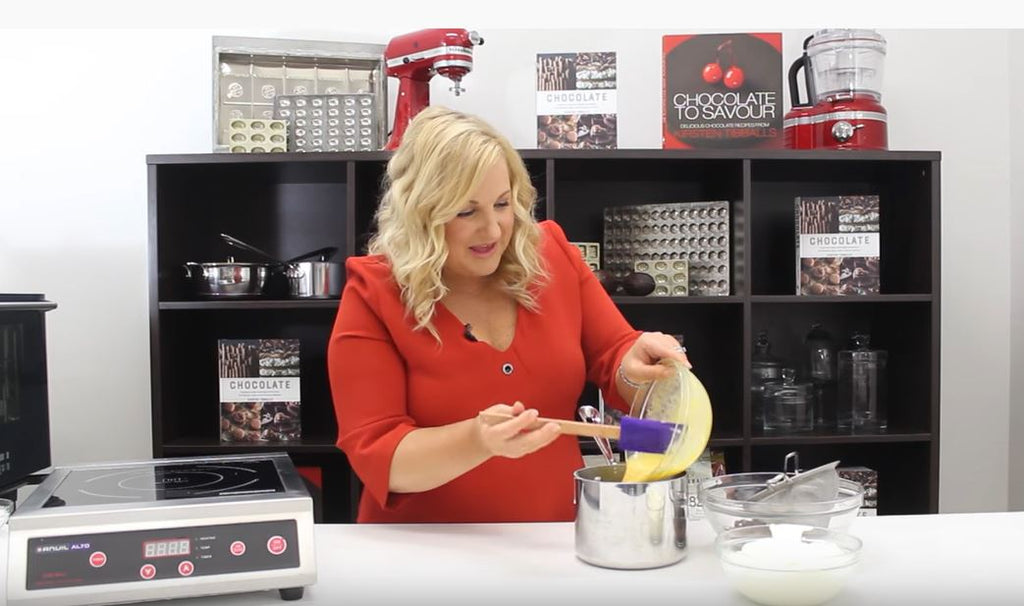
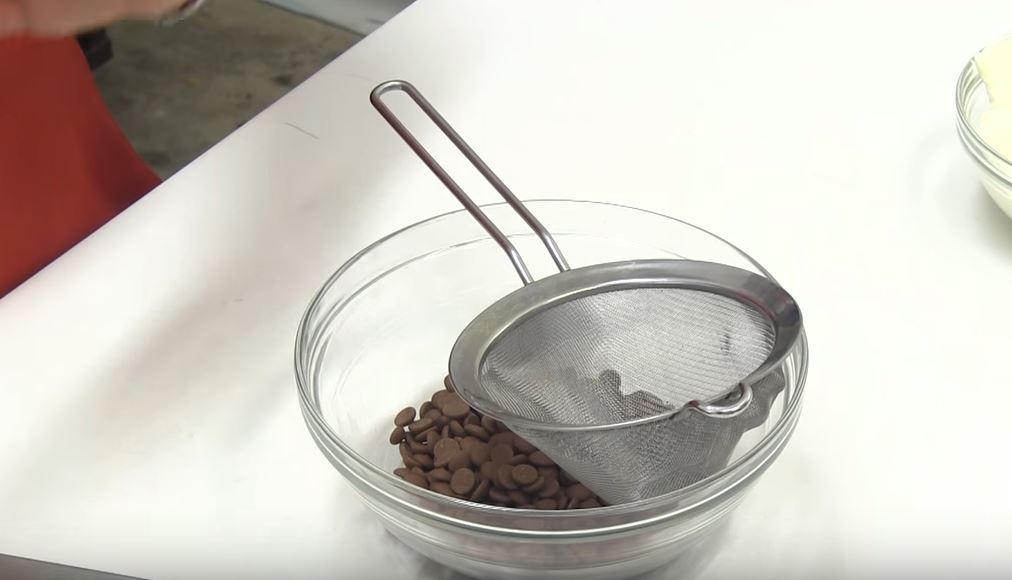
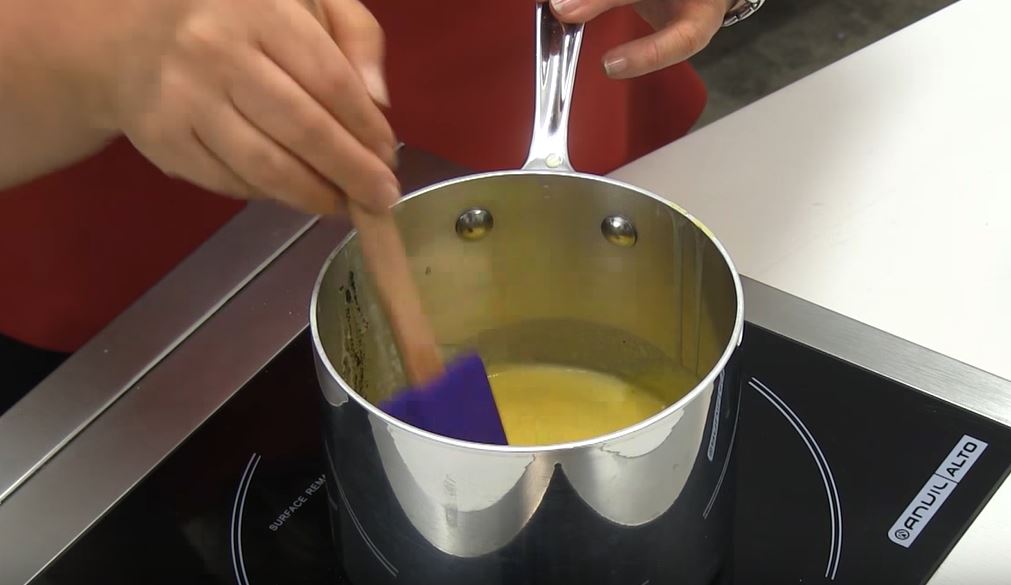

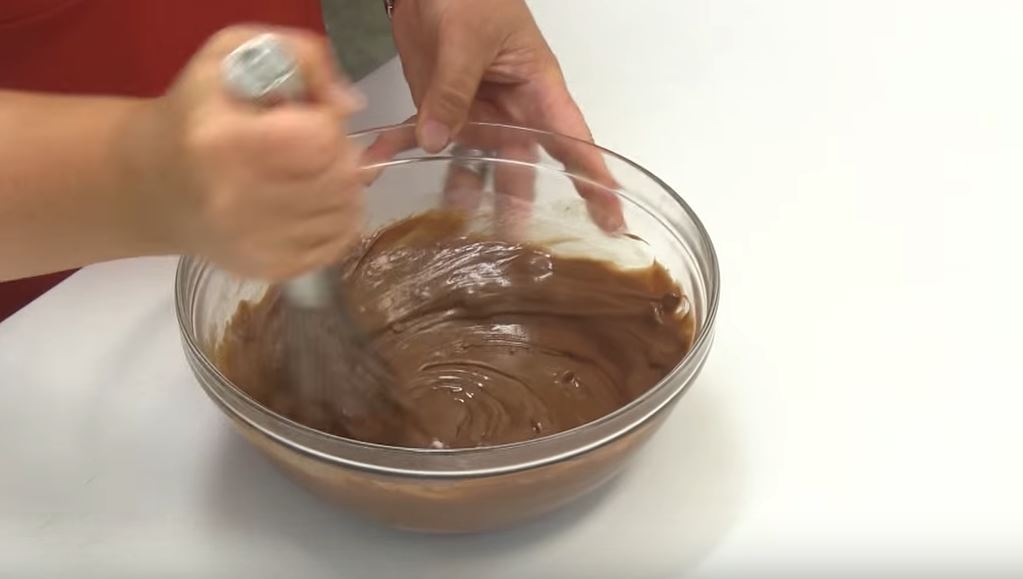
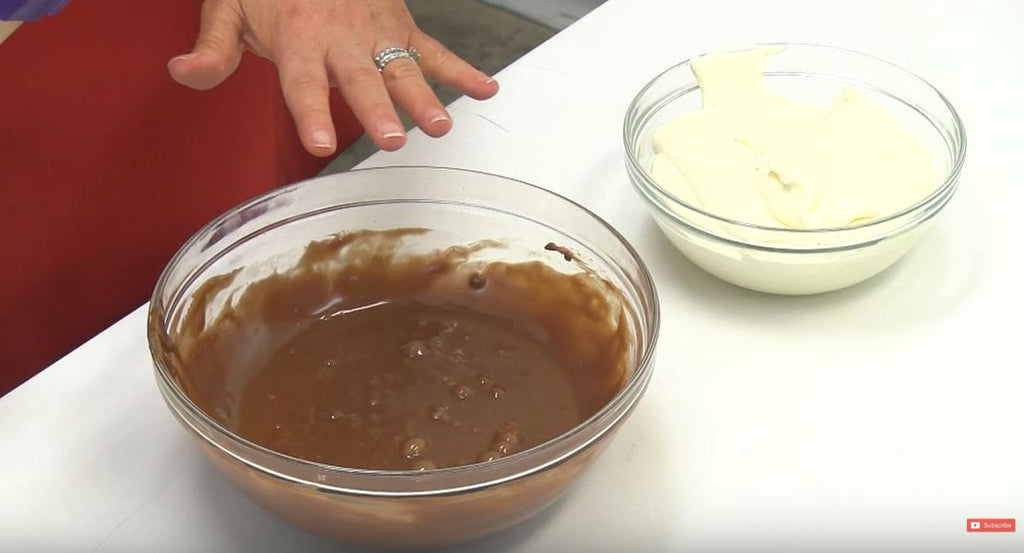

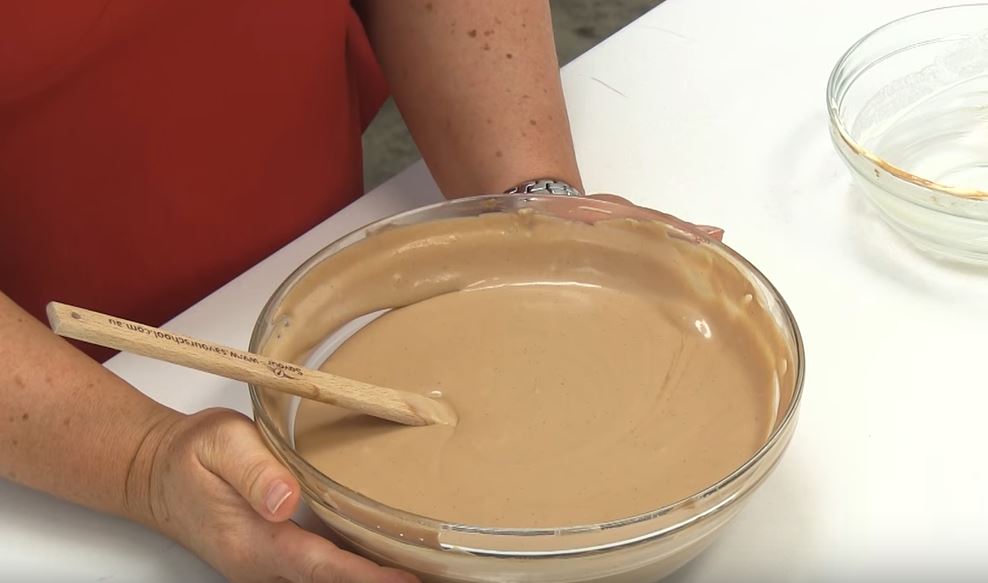
Leave a comment